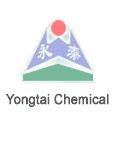<p-Phthalic acid: 1,4-Benzenedicarboxylic acid>
Formula: C8H6O4
Description: White needle crystal or powder
Uses : As a reagent for alkali in wool , additive to poultry feeds.
Chemical and physical properties
Combustibility: Flammable
Toxicity : Low toxicity
Density : 1.510 g/cm3
Sublimation : 402 ℃ ( Under natural pressure)
Melting point: 425 ℃ (in a gland )
Solubility : dissolving in hot grain alcohol , not dissolving in water, aether , glacial acetic acid and chloroform.
PTA Specification:
Test Item |
Specification |
PTA Content% |
99% |
Metal(Fe,Mo,Cr,Ti,Mn,Ni,Co)ppm≤ |
≤4ppm |
Moisture %≤ |
≤0.5% |
Fe ppm≤ |
2ppm |
DMF Chroma.5%Liquor<APHA> |
10 |
4-CBA ppm≤ |
≤25ppm |
Acid Num(mg KOH/g) |
675±2 |
Package and storage
Storage : Keep container closed when not in use, Store in a cool, dry,well-ventilated area away from strong oxidizing substances.
Package : Pocket by measured or pocket in tank car
Preparation
High temp. oxidation: While acetic acid as solvent, Co,Mn, Br admixture as catalyzer p-xylene will oxidate into crude terephthalic acid <CTA>. Under certain temperature and pressure. Then CTA dissolve into water under high temperature and pressure. And passa Pd/C catalyzer settled vessel which is a reactor where the oxidation production will be hydrogenated in order to removeimpurity(4-CBA).Afterward.the hydrogenation production will become the final production(PTA) after crystallizing filtrating P-Tol acid and drying.
Health related information
Ingestion : May cause irritation fo the digestive tract
Inhalation : Causes respiratory tract irritation
Skin : Causes slight skin irritation
Eyes : Causes eye irritation
Please read the MSDS for this chemical before using.
|




